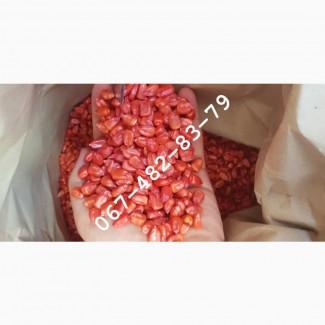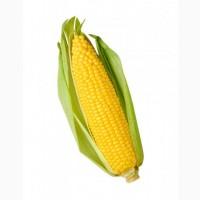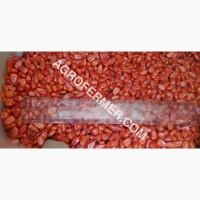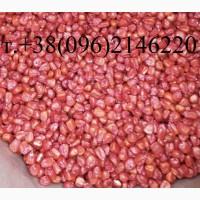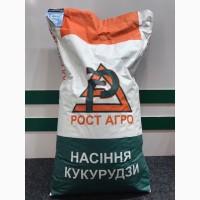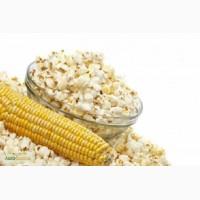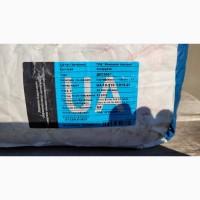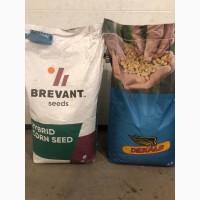I will sell / buy
I will sell corn seeds CORBIN FAO 260 Canadian transgenic hybrid, Odesa region.
Price210 UAH. / kg
Region:all of Ukraine,
Odesa region.
Updated:
Purpose of grain: Seed material
CORBIN FS - 899 FAO 260
UAH 210/kg
UAH 210,000/t
Hot transgenic corn hybrid CORBIN FS - 899, developed on the basis of nano-technology by the well-known American chemical concern UNION CARBIDE, the Canadian holding SERTIS for the countries with the most arid and unfavorable conditions for growing corn in North and South Africa and Asia. Scientifically developed in Canada in 2016, underwent hybrid tests for drought resistance in Canada, Sudan, Libya, Niger, Angola, Yemen, Mozambique, Ethiopia, where the average tem. the air was + 58 C *, in these harsh conditions he showed excellent results in terms of yield. Hybrid tests for drought resistance were also held in Russia in the Krasnodar region, Samara region, Astrakhan region, Kazakhstan, Turkmenistan, Azerbaijan, Kyrgyzstan, where the average temperature was + 50 C*. The root system of transgenic corn is rod-shaped with a well-developed main root that penetrates the soil to a depth of up to 2 meters, it is quite cold-resistant, the minimum temperature for seed germination is + 2 C*, + 3 C *. About 50% of the root system develops at a depth of up to 80 cm. Nodules with nitrogen-fixing bacteria are formed on the roots. The stem is erect up to 18 cm in circumference, without a cavity inside, the leaves are large, linear-lanceolate up to 20 cm and 1 meter long, their number is 26. The length of the corn cob reaches 34 cm, the number of cobs on the stalk is 4, the weight of the cob is 700 grams, the cobs are tightly surrounded by leaf-like wrappers, there are 1,200 kernels on one cob, the corn cobs are yellow, siliceous-tooth-shaped. This corn hybrid is self-pollinating and does not require the presence of bees.
A distinctive feature of the transgenic corn hybrid CORBIN FS - 899, from other common varieties and hybrids of corn:
1) It is characterized by increased drought tolerance of corn + 65 C*.
2).
3) It has resistance to increased moisture content in the soil.
4) This corn hybrid is resistant to all corn diseases that affect common corn varieties and hybrids, such as (red early corn rot, spotted root rot, seed mold, blister blight, powdery blight, corn rust, helminthosporiosis, stem rot, fusarium wilt, fusarium wilt primary, dwarf mosaic virus, etc.) and is not affected by these diseases.
5) The height of the corn plants is 240 cm and the quantity of the initial corn is 4 pieces, the initial weight is 700 grams due to this high yield of the corn.
6) This hybrid is resistant to soil salinization.
7)Corn grain ripens evenly on the whole plant, the grain does not crack or fall out of the cob, but remains firmly in the cob until it is fully ripened, thanks to this, the corn does not need desiccation, corn is harvested directly by harvesters.
8) It is resistant to lodging due to a strong, powerful stem, characterized by rapid moisture release.
This corn hybrid was sown in 2017. in Ukraine and showed excellent yield results(//tractor-service.com)
The weight of 1000 seeds is 340 grams.
The yield of the Canadian transgenic corn hybrid CORBIN FS - 899 is min. 180 cents, max. 190 cents. s 1 - ha.
Germination - 97%, Germination energy - 97%, Typicality - 100%, Moisture - 12%, Purity - 99.99%.
The rate of sowing corn CORBIN FS - 899 per 1 ha is 18 kg with precision seed drills or spot seed drills CUPN-12А (ХТЗ-161) СПЧ-6 СУПН–8 (МТЗ 80–82) with a unit movement speed of 4-5 km/hour . Then corn is sown with rows of 70 cm or 45 cm, then sowing of corn is carried out with beet seed drills SST-15 B or SST-12B or SST-8 with the use of new seeding discs.
Corn seeds are sowncorn seeds to a depth of 5 cm - 6 cm. Corn sprouts appear 9-10 days after sowing.
Sowing of the Canadian corn hybrid CORBIN FS - 899 begins on March 10 and continues until May 30 inclusively.
Insecticides - treat corn with FORS tefluthrin 200 g/l or Cruiser 350 g/l - 1 liter per 1 ton before sowing.
Herbicides of a wide spectrum of action: alizor - 72% k.e. dose 4.5-9 liters/1ha, lasso 48% dose 5-7 liters/1ha, primekstra 50% CC 4-6 liters\1ha, eradikan 6 E 72% k.e. - 5-6.3 l/1ha, simazine 50% s.p. – 3-4 kg/1 ha, protrazin (a mixture of atrazine - 33.3%, and promethrin - 16.7% = 50% s.p.) 4-6 kg/ha long-acting herbicide, in the phase of 3-5 leaves use amino salt 2.4-D 40% VR - 1.5 - 2.5 l/1 ha, bazagran 48% VR-2-4 l/1 ha or Titus 0.04 kg/1 ha + 200 ml./1 ha . PAV Trend, Task 0.384 kg/1 ha in the phase up to 7 leaves.
Nitroammophoska fertilizers 200 kg or saltpeter 250 kg per 1 ha are applied before sowing the crop, during sowing, or after sowing corn.
The vegetation period of the Canadian mid-early corn hybrid CORBIN FS - 899 is 100-105 days from sowing to harvesting.
Cleaning Corn is harvested with combine harvesters Don - 1500, Don - 2000, Slavutych, Niva with a PPK - 4 or ACC - 4 attachment, Franz Kleine, Challenger, Bizon, John Deer, Case.
Corn (Zea Mays) is an annual herbaceous plant of the cereal family, a grain forage crop. Corn as a cultivated plant has been known since ancient times, it is believed that it began to be grown 7000 years before our era. This culture was first cultivated in South America, then Indian tribes brought it to Central America and Mexico. Corn was the main food of the Maya, Aztecs, and Incas. The Indians used not only grains for food, but also panicles, from the pollen they prepared soup. Corn was brought to Europe at the end of the 14th century, at that time it was called Indian wheat and flour was made from it. From corn grain, groats, flour, starch, alcohol, compound feed are produced, the germ of corn goes into corn oil, the content of germs in corn is 20% of the total mass, the yield of corn oil is 56%, corn oil is obtained by cold and hot pressing and pressing with extraction of raw materials , unrefined corn oil is recommended as a dietary supplement for the prevention and treatment of atherosclerosis, obesity, and diabetes. Green mass, stalks, crushed corn cobs are used for silage for animal feed. In industry, cellulose, paper, furfural, lignin, xylose, and viscose are initially produced from corn stalks, their wrappers, and cores. In world agriculture, corn accounts for 180 million hectares, the second place after wheat. Genetically modified corn was grown in 1997, it was one of the eleven GM crops that were grown in the world for commercial purposes. By 2009, 85% of the corn grown in the USA, Canada, Brazil, Argentina, South Africa, Spain, Portugal, France, Germany, the Czech Republic, Italy, Poland, Laos, Chile, England, etc., was genetically modified.| ||179
Бесплатная доставка по Украине.
UAH 210/kg
UAH 210,000/t
Hot transgenic corn hybrid CORBIN FS - 899, developed on the basis of nano-technology by the well-known American chemical concern UNION CARBIDE, the Canadian holding SERTIS for the countries with the most arid and unfavorable conditions for growing corn in North and South Africa and Asia. Scientifically developed in Canada in 2016, underwent hybrid tests for drought resistance in Canada, Sudan, Libya, Niger, Angola, Yemen, Mozambique, Ethiopia, where the average tem. the air was + 58 C *, in these harsh conditions he showed excellent results in terms of yield. Hybrid tests for drought resistance were also held in Russia in the Krasnodar region, Samara region, Astrakhan region, Kazakhstan, Turkmenistan, Azerbaijan, Kyrgyzstan, where the average temperature was + 50 C*. The root system of transgenic corn is rod-shaped with a well-developed main root that penetrates the soil to a depth of up to 2 meters, it is quite cold-resistant, the minimum temperature for seed germination is + 2 C*, + 3 C *. About 50% of the root system develops at a depth of up to 80 cm. Nodules with nitrogen-fixing bacteria are formed on the roots. The stem is erect up to 18 cm in circumference, without a cavity inside, the leaves are large, linear-lanceolate up to 20 cm and 1 meter long, their number is 26. The length of the corn cob reaches 34 cm, the number of cobs on the stalk is 4, the weight of the cob is 700 grams, the cobs are tightly surrounded by leaf-like wrappers, there are 1,200 kernels on one cob, the corn cobs are yellow, siliceous-tooth-shaped. This corn hybrid is self-pollinating and does not require the presence of bees.
A distinctive feature of the transgenic corn hybrid CORBIN FS - 899, from other common varieties and hybrids of corn:
1) It is characterized by increased drought tolerance of corn + 65 C*.
2).
3) It has resistance to increased moisture content in the soil.
4) This corn hybrid is resistant to all corn diseases that affect common corn varieties and hybrids, such as (red early corn rot, spotted root rot, seed mold, blister blight, powdery blight, corn rust, helminthosporiosis, stem rot, fusarium wilt, fusarium wilt primary, dwarf mosaic virus, etc.) and is not affected by these diseases.
5) The height of the corn plants is 240 cm and the quantity of the initial corn is 4 pieces, the initial weight is 700 grams due to this high yield of the corn.
6) This hybrid is resistant to soil salinization.
7)Corn grain ripens evenly on the whole plant, the grain does not crack or fall out of the cob, but remains firmly in the cob until it is fully ripened, thanks to this, the corn does not need desiccation, corn is harvested directly by harvesters.
8) It is resistant to lodging due to a strong, powerful stem, characterized by rapid moisture release.
This corn hybrid was sown in 2017. in Ukraine and showed excellent yield results(//tractor-service.com)
The weight of 1000 seeds is 340 grams.
The yield of the Canadian transgenic corn hybrid CORBIN FS - 899 is min. 180 cents, max. 190 cents. s 1 - ha.
Germination - 97%, Germination energy - 97%, Typicality - 100%, Moisture - 12%, Purity - 99.99%.
The rate of sowing corn CORBIN FS - 899 per 1 ha is 18 kg with precision seed drills or spot seed drills CUPN-12А (ХТЗ-161) СПЧ-6 СУПН–8 (МТЗ 80–82) with a unit movement speed of 4-5 km/hour . Then corn is sown with rows of 70 cm or 45 cm, then sowing of corn is carried out with beet seed drills SST-15 B or SST-12B or SST-8 with the use of new seeding discs.
Corn seeds are sowncorn seeds to a depth of 5 cm - 6 cm. Corn sprouts appear 9-10 days after sowing.
Sowing of the Canadian corn hybrid CORBIN FS - 899 begins on March 10 and continues until May 30 inclusively.
Insecticides - treat corn with FORS tefluthrin 200 g/l or Cruiser 350 g/l - 1 liter per 1 ton before sowing.
Herbicides of a wide spectrum of action: alizor - 72% k.e. dose 4.5-9 liters/1ha, lasso 48% dose 5-7 liters/1ha, primekstra 50% CC 4-6 liters\1ha, eradikan 6 E 72% k.e. - 5-6.3 l/1ha, simazine 50% s.p. – 3-4 kg/1 ha, protrazin (a mixture of atrazine - 33.3%, and promethrin - 16.7% = 50% s.p.) 4-6 kg/ha long-acting herbicide, in the phase of 3-5 leaves use amino salt 2.4-D 40% VR - 1.5 - 2.5 l/1 ha, bazagran 48% VR-2-4 l/1 ha or Titus 0.04 kg/1 ha + 200 ml./1 ha . PAV Trend, Task 0.384 kg/1 ha in the phase up to 7 leaves.
Nitroammophoska fertilizers 200 kg or saltpeter 250 kg per 1 ha are applied before sowing the crop, during sowing, or after sowing corn.
The vegetation period of the Canadian mid-early corn hybrid CORBIN FS - 899 is 100-105 days from sowing to harvesting.
Cleaning Corn is harvested with combine harvesters Don - 1500, Don - 2000, Slavutych, Niva with a PPK - 4 or ACC - 4 attachment, Franz Kleine, Challenger, Bizon, John Deer, Case.
Corn (Zea Mays) is an annual herbaceous plant of the cereal family, a grain forage crop. Corn as a cultivated plant has been known since ancient times, it is believed that it began to be grown 7000 years before our era. This culture was first cultivated in South America, then Indian tribes brought it to Central America and Mexico. Corn was the main food of the Maya, Aztecs, and Incas. The Indians used not only grains for food, but also panicles, from the pollen they prepared soup. Corn was brought to Europe at the end of the 14th century, at that time it was called Indian wheat and flour was made from it. From corn grain, groats, flour, starch, alcohol, compound feed are produced, the germ of corn goes into corn oil, the content of germs in corn is 20% of the total mass, the yield of corn oil is 56%, corn oil is obtained by cold and hot pressing and pressing with extraction of raw materials , unrefined corn oil is recommended as a dietary supplement for the prevention and treatment of atherosclerosis, obesity, and diabetes. Green mass, stalks, crushed corn cobs are used for silage for animal feed. In industry, cellulose, paper, furfural, lignin, xylose, and viscose are initially produced from corn stalks, their wrappers, and cores. In world agriculture, corn accounts for 180 million hectares, the second place after wheat. Genetically modified corn was grown in 1997, it was one of the eleven GM crops that were grown in the world for commercial purposes. By 2009, 85% of the corn grown in the USA, Canada, Brazil, Argentina, South Africa, Spain, Portugal, France, Germany, the Czech Republic, Italy, Poland, Laos, Chile, England, etc., was genetically modified.| ||179
Бесплатная доставка по Украине.
|
Author, contacts | |
Andrei/ reviews, info.| ||193 / activity evaluation | |
|
Phone:
050-xxxxxx
show
| |
All user ads ~33 | |
Ad ID: #1222653
(added by a registered user, registration date: 02-04-2018)
Added / Updated: 20-09-2024 16:00 (current, until: 09-20-2025)
Permanent Ad Address:
Shows / views for today: ?, total: ?
